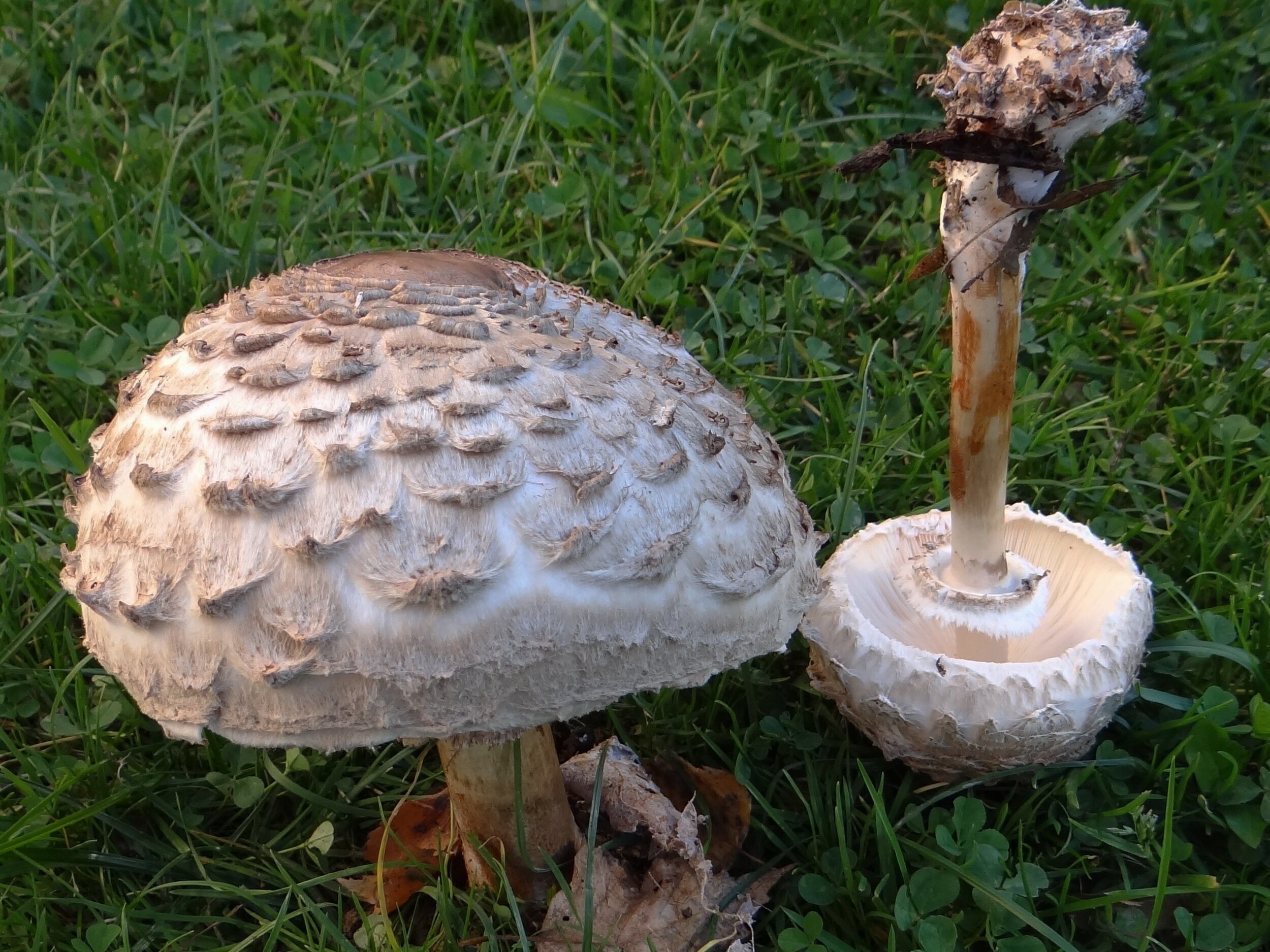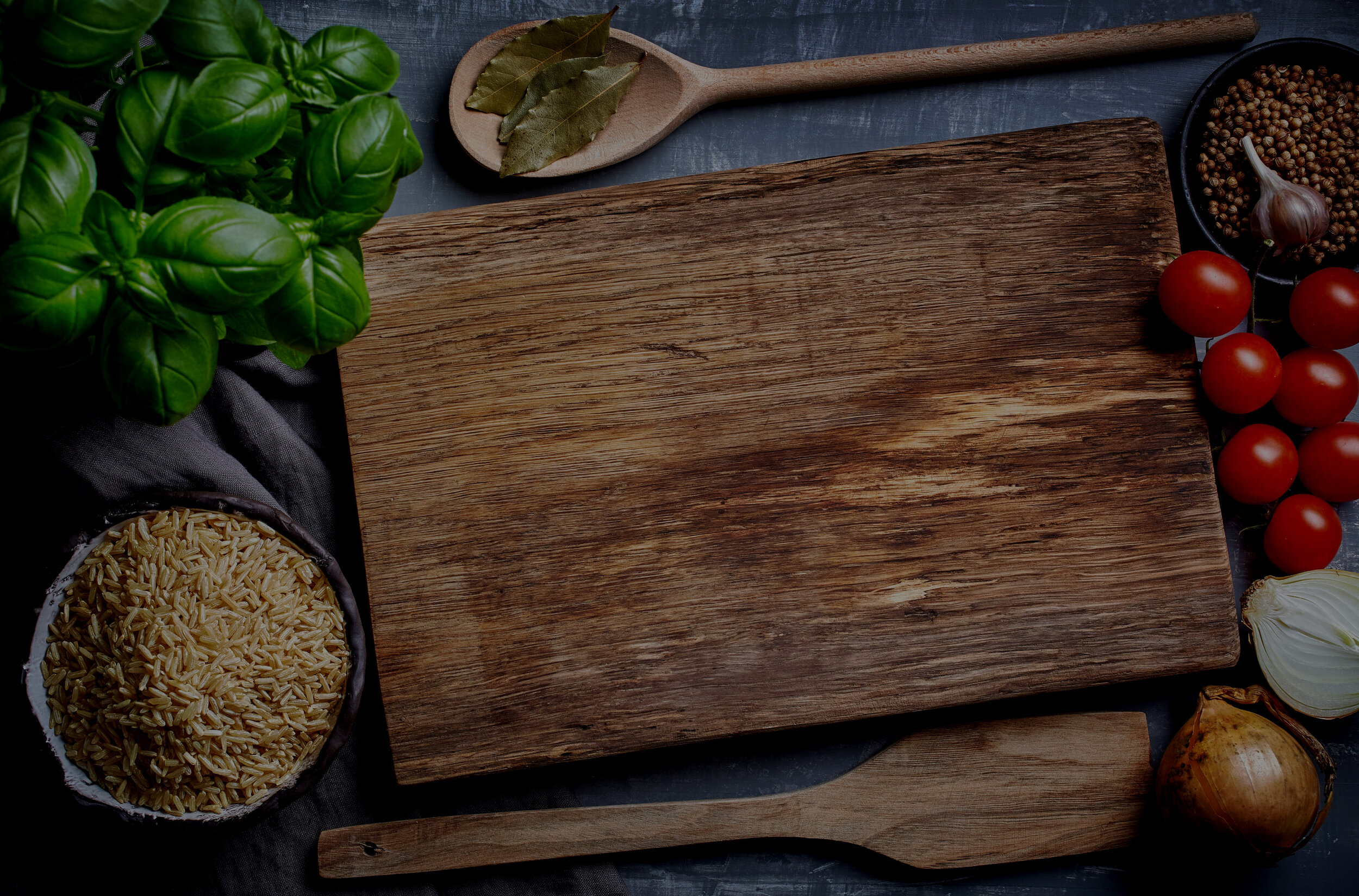
Chlorophyllum rachodes
Also known as Macrolepiota rachodes and Lepiota rachodes
SHAGGY PARASOL
Order: Agaricales, family Agaricaceae
CAP FIRST SMOOTH THEN DENSELY SCALY
Cap: 6-20 cm; oval then convex, becoming nearly flat; reddish brown and smooth when young, then white with large shaggy scales as cap expands; flesh turns pinkish orange, then slowly brownish when sliced
GILLS FREE, WHITE
Gills: free; broad, crowded; white, dingy brown with age
STALK ENLARGED AT BASE; WITH DOUBLE RING
Stalk: 5-28 cm long, 1-3 cm thick; enlarged at base; bruises reddish then brownish
Ring: thick, double-edged; white with brown, ragged edge; often movable
SPORE PRINT WHITE
Spores: 6-13 x 5-9 µm, smooth, elliptical, dextrinoid, small pore
Chlorophyllum rachodes🍴Edible, Choice - Cook thoroughly
Found UNDER TREES, OR DISTURBED AREAS, IN FALL
LOOKALIKES
Green spore print, not as shaggy
Agaricus sp. -- dark brown spores
YOU MIGHT ALSO LIKE TO KNOW...
The common shaggy parasol fruits in late summer, often into the chill of fall. It likes disturbed areas or under blue spruce, juniper or cedar.
But, beware, it looks like the vomiter (Chlorophyllum molybdites) especially when young. While the vomiter will leave you puking for hours, the shaggy parasol is delicious. The vomiter, however, is ultimately less shaggy, often shorter and wider, and has a dingy green spore print.
Still, the first time we ate the shaggy parasol, we had a twinge of concern that we were eating a poisonous mushroom. It turned out that this added a certain excitement to eating it -- maybe even made the mushroom taste better as it aroused our senses more. (Let's be clear: we do not advocate eating any mushroom that you are not 100 percent sure is edible.) Our experience compares to a common gastronomic tradition enjoyed by the Japanese:
They consider a type of poisonous puffer fish a delicacy. To render the fish edible, a skilled chef must cut away the poison glands in surgeon-like fashion. Apparently, some Japanese enjoy the puffer fish most if, after eating it, they experience a tingling in their nerves, indicating that minute amounts of poison were left in the fish by the expert knife-wielding chef. Maybe these Japanese are an experiencing an excitement or high from being "close to the brink" -- like sky jumpers, bunji jumpers, or other U.S. daredevilers might feel?
In any case, the shaggy parasol is one of the better city edibles, and some people will go to great lengths to pick one. As Wayne Harrison reported in Spores Afield, the newsletter of the Colorado Mycological Society: "We were walking along the outdoor feline cages (at the Colorado Springs Zoo) when I spotted it: a huge globe of a mushroom growing in wood chips just outside the snow leopard cage, and more than an arms length from the low railing along the sidewalk.... I waited for a lull in the crowd, then quickly hopped the railing and grabbed the mushroom. I threw it in the diaper bag while rehearsing what I would say if someone asked what I was doing. I never really came up with a good excuse. “Mushroom? What mushroom?” I made it out of the zoo without being arrested and got to the car where I was able to examine my bounty in detail. .... It was so big, we couldn't eat all of it with dinner."
From Gary Lincoff: There are 3 Shaggy Parasol Mushrooms - Chlorophyllum rhacodes (this one), Chlorophyllum brunneum (the Brown Shaggy Parasol) and Chlorophyllum olivieri (the Gray Shaggy Parasol). The latter occurs in the PNW. Chlorophyllum brunneum is common in the Bay Area of California. All Parasol Mushrooms with white spore prints are edible when well-cooked, although some people do experience an allergic (digestive upset) reaction. The Green-spored Lepiota, Chlorophyllum molybdites is poisonous, of course, but it is not the only "Lepiota"-like mushroom that is poisonous. Some SMALL species of Lepiota are known to be DEADLY. One person died recently in Albany, New York from eating a small Lepiota. Small Lepiotas grow in grass and near plantings in urban and suburban areas coast to coast.

PENELOPE'S PANTRY
The flavor of shaggy parasol is described as strong, earthy and nutlike. It goes well with grains and starches. Use only the caps, as the stems are too tough. There are not many recipes in mushroom cookbooks for the edible parasol. Try the following soup recipe with wild game or buffalo.
SHAGGY PARASOL AND POTATO SOUP
2 slices chopped bacon
3 T butter
1 large thinly sliced leek, white part only
4 C potatoes, cut in ½" cubes
2 C chopped shaggy parasol mushroom
3-1/2 C stock (chicken or vegetable)
1/8 t ground nutmeg
1/8 t ground white pepper
½ t salt 1-1/2 C cream
chopped fresh chives for garnish
Cook the bacon in a large saucepan over a medium flame until almost crisp. Add the butter and saute the leek until it is limp and turning yellow. Add the potatoes and mushrooms. Stir and cook for a few minutes. Add the stock and spices. Turn the heat up, bring to a boil for one minute, reduce heat to low, cover, and simmer until the potatoes are quite tender, about 15-20 minutes. Remove from stove. Puree ½ the soup in a blender. Return all to the stove and add the cream. Adjust the seasonings to taste and heat to steaming. Do not boil once the cream is added. Serves eight and can be eaten chilled, if desired.



